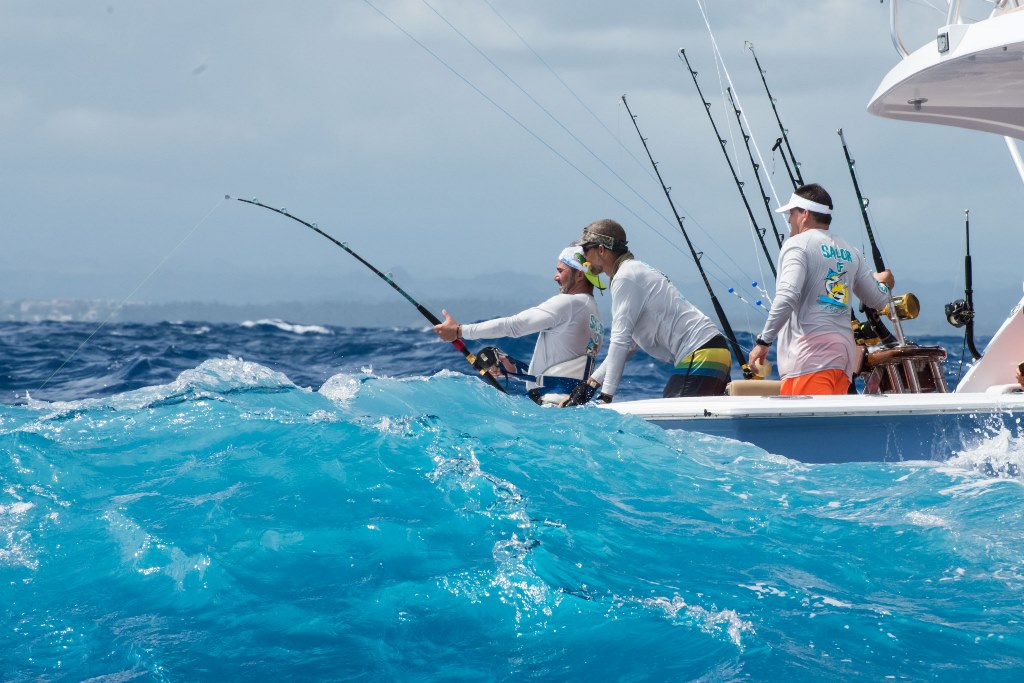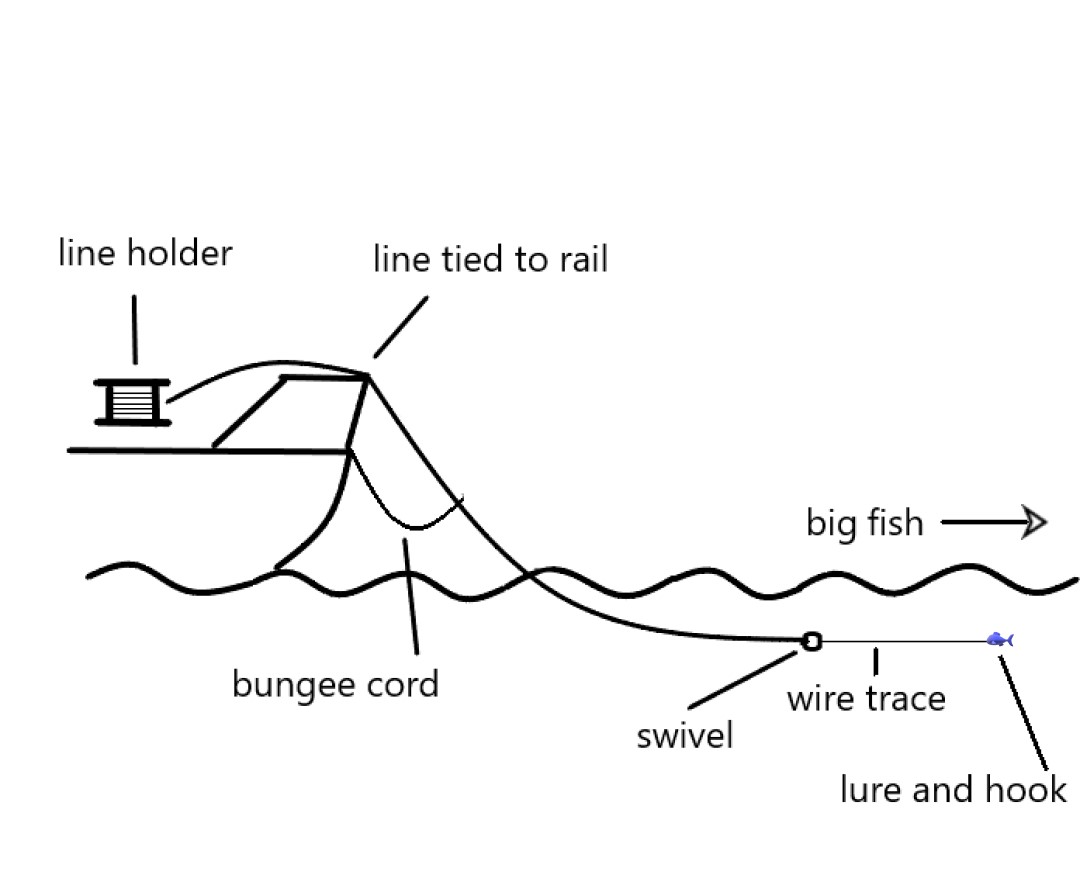
I was helping deliver a sailboat, we were sailing up the Caribbean Island chain, well off shore and in deep water where pelagic fish like Dorado and Wahoo roam. It was a stunning day; we were making seven knots and seabirds were diving all around us. Seabirds in a feeding frenzy can mean there are the large fish around and I said to the skipper that we should tow a fishing line. “Ha,” he said, “I’ve pulled a line for thousands of miles and never caught a thing but be my guest, the gear’s in that cockpit locker.”
What I found was a tangled heap of fishing line, an expensive reel attached to a rod missing half its eyes, rusty hooks, and a scattering of lures all stowed beneath the spare fuel jugs reeking of gas and diesel. Now fish might be daft enough to think a rubber squid is the real thing but they certainly aren’t dumb enough to take a lure stinking of fuel. No fish supper for us.
Fishing doesn’t need to be complicated. Yes, you can fish with a rod from the back of your boat and thrill to the fight as the reel screams, the rod bends, and you haul like champion fisherman Ernest Hemmingway landing a record-breaking blue marlin. You can even go out on a sport fishing charter and really live the life, but in this blog we’re going for something a little more basic: the simple hand line.
To start you are going to need some lures and they come in all shapes and sizes. Among a fine selection of fishing gear, Budget Marine has a great selection of lures and they are not expensive. Remember, you might end up with a 30lb Dorado and that’s hundreds of dollars worth of fish at market or restaurant prices, so that’s not a bad return on your dollar.
Here’s the basic kit: You’ll need a hundred meters of strong line, and something to wrap it around. Add to that some wire leaders, swivels, hooks of varying sizes (I like triple hooks) and a selection of lures. You might want to include a thick pair of gloves because the line will dig into your flesh when hauling in a heavy fish.
See the diagram for the basic setup.

I use quarter inch diameter brown cord for the main fishing line. The frame I made from two twelve inch sections of brush handle glued into two lengths of 2×1. The bungee cord is critical, it reduces the shock when a fish takes the lure and also helps set the hook. The wire trace between the cord and the hook stops the fish from biting through it. This needs to be around eight feet long, but a word of caution. A wire trace acts like a cheese cutter and hauling in the trace with a heavy fish on the end can do serious damage to your hands. That’s why I recommend gloves. I did it without when I was young and tough, and still have the scars to prove it.
Always fasten a swivel between the line and trace. To attach it, use a ferule nipped together with a crimping tool or cobble together a knot using pliers.
When it comes to lures, make sure you have a selection of different styles and colors. If one isn’t catching then change it for another. You also need a selection because the chances are you are going to lose some when that monster fish strikes. I had success with lures that that were primarily yellow. Other people told me that color never worked for them.
When trolling, the boat needs to be moving at a decent speed. I’ve caught fish from four knots upwards. If you are moving at speed then the lure could skip along the surface, and you might want to add a weigh before the swivel to take it down. Then again, you might just get lucky.
If you do hook a fish then haul it in quickly or the chances are something will take it from you. I have hauled in nothing but a bleeding head on several occasions. Slowing down the boat can make hauling easier.
To fish successfully requires a little work. Be prepared to try different lures, and regularly check your hook for weed.
And finally, no matter the equipment you use, expensive rods and reels or the basic hand line, look after it. Stow it properly when not in use, don’t contaminate it with fuel, and you will have more fish suppers than you know what to do with.
Gary E. Brown©2020


